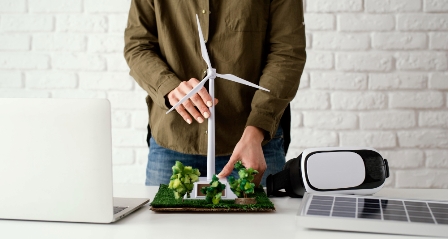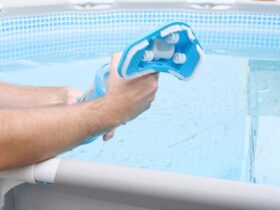In today’s world, where environmental concerns are at the forefront, the significance of adopting sustainable practices extends to every aspect of our lives, including plumbing. Green plumbing, also known as eco-friendly plumbing, is a revolutionary approach that emphasizes water and energy conservation while minimizing the environmental impact of plumbing systems.
Definition of Green Plumbing
Green plumbing involves the use of environmentally conscious plumbing practices, materials, and technologies to reduce the consumption of water and energy, ultimately contributing to a more sustainable and eco-friendly future.
Importance of Sustainable Practices
The urgency to adopt green plumbing practices stems from the growing environmental challenges, such as water scarcity, energy depletion, and pollution. By implementing sustainable plumbing solutions, we not only contribute to the conservation of natural resources but also pave the way for a greener and healthier planet.
Benefits of Green Plumbing
Environmental Impact
One of the primary benefits of green plumbing is its positive impact on the environment. By reducing water and energy consumption, green plumbing helps conserve precious resources and decreases the carbon footprint associated with traditional plumbing systems.
Cost Savings
Beyond environmental benefits, green plumbing also offers substantial cost savings. The use of energy-efficient appliances and water conservation measures translates into lower utility bills for homeowners and businesses alike.
Key Components of Green Plumbing
Low-Flow Fixtures
Low-flow fixtures, including faucets, showerheads, and toilets, are integral components of green plumbing. These fixtures significantly reduce water usage without compromising performance, making them an easy and effective way to promote water conservation.
Water-Efficient Appliances
The incorporation of water-efficient appliances, such as dishwashers and washing machines, further contributes to sustainable practices. These appliances are designed to optimize water usage, promoting efficiency without sacrificing functionality.
Rainwater Harvesting
Rainwater harvesting systems collect and store rainwater for later use, reducing the reliance on traditional water sources. This sustainable practice not only conserves water but also provides an alternative source for irrigation and non-potable water needs.
Energy-Efficient Water Heaters
Tankless Water Heaters
Tankless water heaters, also known as on-demand water heaters, are a key element in green plumbing. Unlike traditional water heaters that constantly heat a large tank of water, tankless heaters only heat water as needed, minimizing energy waste and reducing overall energy consumption.
Solar Water Heaters
Harnessing the power of the sun, solar water heaters utilize solar panels to heat water. This renewable energy source not only reduces reliance on electricity or gas but also contributes to a cleaner and more sustainable energy mix.
Eco-Friendly Pipe Materials
Copper vs. PEX
Choosing the right pipe materials is crucial for green plumbing. While copper has been a traditional choice, PEX (cross-linked polyethylene) pipes offer a more sustainable alternative. PEX is not only durable but also requires less energy to manufacture and install.
Recycled Material Options
Exploring pipes made from recycled materials is another sustainable choice. These pipes reduce the demand for new raw materials and contribute to the circular economy, emphasizing the importance of recycling in plumbing practices.
Greywater Recycling Systems
Definition and Function
Greywater recycling involves the collection and treatment of non-sewage wastewater from activities like bathing and laundry. This treated water can then be reused for irrigation or flushing toilets, reducing the demand on freshwater resources.
Installation and Maintenance
Implementing a greywater recycling system requires proper installation and regular maintenance. Homeowners can work with plumbing professionals to ensure the system’s effectiveness and longevity, contributing to sustainable water management.
Sustainable Drainage Solutions
Importance of Proper Drainage
Effective drainage is crucial for preventing water-related issues and ensuring the longevity of plumbing systems. Green plumbing emphasizes sustainable drainage solutions that manage stormwater effectively without causing harm to the environment.
Green Roof Technology
Green roofs, covered with vegetation, play a dual role in green plumbing. They absorb rainwater, reducing runoff and stress on drainage systems, while also providing insulation that can contribute to energy efficiency in buildings.
Certifications for Green Plumbing
LEED Certification
The Leadership in Energy and Environmental Design (LEED) certification is a recognized standard for green building practices. Obtaining LEED certification for plumbing projects ensures adherence to stringent environmental standards and demonstrates a commitment to sustainability.
WaterSense Certification
WaterSense is a program by the Environmental Protection Agency (EPA) that certifies water-efficient products. Choosing WaterSense-certified plumbing fixtures and appliances assures consumers of their water-saving capabilities, aligning with green plumbing principles.
Green Plumbing in Commercial Settings
Corporate Responsibility
Businesses are increasingly recognizing the importance of corporate responsibility, and green plumbing is a crucial aspect of sustainable business practices. Adopting eco-friendly plumbing solutions not only demonstrates environmental stewardship but can also enhance a company’s reputation.
Challenges and Solutions
Common Challenges in Implementing Green Plumbing
Despite the numerous advantages, there are challenges in transitioning to green plumbing practices. These challenges may include initial costs, resistance to change, and lack of awareness. Addressing these challenges is essential for widespread adoption.
Innovative Solutions
Innovative solutions, such as government incentives, awareness campaigns, and technological advancements, can address the challenges associated with green plumbing. These solutions contribute to making sustainable practices more accessible and appealing to a broader audience.
Government Incentives and Policies
Encouraging Sustainable Practices
Government incentives and policies can significantly influence the adoption of green plumbing. Providing tax benefits, rebates, and other incentives encourages homeowners and businesses to invest in sustainable plumbing solutions, fostering a culture of environmental responsibility.
Tax Benefits and Rebates
Exploring tax benefits and rebates for green plumbing installations not only reduces the financial burden on consumers but also accelerates the transition to sustainable practices. Governments can play a pivotal role in incentivizing environmentally friendly choices.
Future Trends in Green Plumbing
Technological Advancements
As technology continues to advance, new innovations in green plumbing are on the horizon. Smart water management systems, real-time monitoring, and other technological advancements are poised to revolutionize the landscape of sustainable plumbing practices.
Integration with Smart Home Systems
The integration of green plumbing with smart home systems enhances the efficiency and effectiveness of eco-friendly practices. Smart water meters, automated leak detection, and remote control of water usage contribute to a more streamlined and responsive plumbing infrastructure.
FAQs
Green plumbing involves the use of environmentally conscious plumbing practices, materials, and technologies to reduce the consumption of water and energy, ultimately contributing to a more sustainable and eco-friendly future.
Green plumbing benefits the environment by reducing water and energy consumption, minimizing the carbon footprint associated with traditional plumbing systems, and contributing to the conservation of natural resources.
Key components of green plumbing include low-flow fixtures, water-efficient appliances, rainwater harvesting, energy-efficient water heaters, eco-friendly pipe materials, greywater recycling systems, and sustainable drainage solutions.
Businesses can adopt green plumbing practices by integrating eco-friendly plumbing solutions, obtaining certifications such as LEED and WaterSense, and showcasing commitment to corporate responsibility. Case studies of successful implementations can provide valuable insights.
Future trends in green plumbing include technological advancements such as smart water management systems, real-time monitoring, and integration with smart home systems. These innovations aim to enhance the efficiency and effectiveness of eco-friendly plumbing practices.
Conclusion
Green plumbing is a transformative approach that holds the key to a more sustainable and eco-friendly future. By embracing eco-conscious materials, energy-efficient technologies, and water-saving practices, we can collectively contribute to the preservation of our planet’s resources. As we navigate the challenges and seize the opportunities presented by green plumbing, we pave the way for a greener, cleaner, and more resilient world.









Find Us on Socials